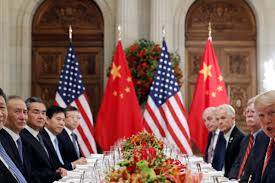By: Seshadri Ramkumar, Professor, Texas Tech University, USA
Trade war that has been lingering on for over a year is expected to go on.
The trade dispute that began in March 2018 has no end in sight and would go on stated, Mr. Bai Xueyin, deputy general manager of the state-owned Beijing-based Hantrong Investment Co. Ltd.
A 30-minute discussion with a group of four Chinese traders was quite educational and enlightened me about China. I decided to return to my hotel by walking with the Chinese visitors after attending Lenzing sponsored dinner hosted by the Mayor of the City of Dornbirn, Austria as part of the 58th Global Fiber Congress. Discussions during the walk in the middle of the night in a mild chilly weather (16 deg C) in the mountain town of Dornbirn was quite revealing and provided firsthand information on what is going on in China in the fiber sector.
At macro level, the trade war is all about geopolitical power, with United States being the number one economic super power and China in the second position. Even if the current United administration changes after the next election, trade situation may remain the same expressed the Chinese visitors, who represent trading agencies.
China has come to adjust itself to the trade situation as the dispute has been lingering for a long time. Chinese industry is realigning itself to accommodate the losses in trade with the United States. Chinese textile industry is shifting to Vietnam and Indonesia, stated Mr. Xueyin. In the short term, the loss of trade has affected China as employment of people is involved, but in the long run, China will adapt stated Xueyin.
Bai Xueyin has a specialized degree in industrial trading and has been with Hantrong Investment Co. Ltd for 10-years, which trades in agriculture, textile materials and chemical products. Due to overall global economic situation, people are not spending much on clothing, which has created a stagnation in the global textile sector. Textile giants like China and India have been affected and aggressive fiber buying is not happening. Commenting on the Chinese economy, the growth of 6.5% is decent, which is higher than developed economies, stated Xueyin. Our economy is big and this growth number is good, added Xueyin.
Chinese mills are focusing on Brazil, Australia, Middle Asia and even India to procure cotton. China is still a dominant player in manufacturing and textile sectors. China consumes about 800,000 metric tons of acrylic, which indicates its consumer power stated Ms. Rachel Chen of Shanghai-based Bright Field Trading Co. Ltd, which trades in acrylic fiber.
China needs to import about 3-4 million metric tons of cotton as the total consumption lingers around 8 million tons. In commenting about the existing government owned cotton stocks, it should be about one million tons stated Mr. Xueyin.
“May be we are not having clear dialogue with the United States,” stated Bai Xueyin. It is good to communicate so that the other party will know what we are thinking viewed Xueyin.
It was Xueyin who navigated our group safely to hotel Krone. He quipped, “you know, I am a good driver so I can find directions fairly correctly.” Xueyin as part of his trading activity has traveled to India, several Asian countries and Europe. He is yet to visit the United States.

